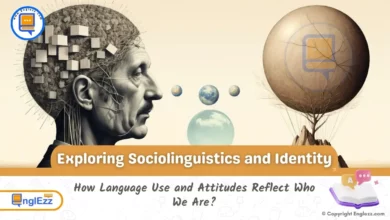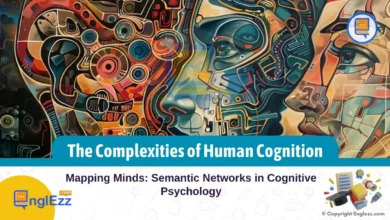Diving into the intricate world of accent adaptation unveils a fascinating interplay of linguistic nuances and social dynamics that shape our speech patterns. Understanding the evolution of accents not only opens a window to diverse cultural landscapes but also sheds light on the interconnectedness of language and identity. In this deep dive into “The Science Behind Accent Adaptation,” we embark on an enlightening journey to uncover the secrets behind how accents change, sway, and morph over time.
The Science Behind Accent Adaptation
Linguistic theories serve as guiding beacons in our exploration, leading us through the labyrinth of phonological assimilation, phonetic variability, and dialectology. These theoretical frameworks illuminate the factors influencing accent changes, from subtle shifts in sound production to broader regional variations that ripple through speech communities.

By dissecting these foundational concepts, we gain a profound insight into how accents become emblematic markers of social belonging and personal narratives. Join us as we unravel the intricate web of influences that mold our accents and delve into the depths of linguistic evolution with a fresh perspective on accent adaptation’s profound significance.
Linguistic Theories Explained
Delving into the science behind accent adaptation leads us to explore various linguistic theories that elucidate how accents evolve. One such theory is phonological assimilation, which describes how sounds modify each other within speech. For example, in the process of assimilation, a sound may become more like a neighboring sound to ease articulation. This phenomenon is prevalent in languages where efficiency in pronunciation drives subtle accent changes over time. By understanding the mechanisms of phonological assimilation, researchers can map out the intricate pathways through which accents adapt and transform.
Further contributing to accent variation is phonetic variability, encompassing differences in pronunciation that significantly influence the way an accent develops. These variations can stem from factors like individual speech habits, interaction with diverse linguistic communities, or exposure to different media sources. By examining these nuances of phonetic variability, linguists gain insights into why accents differ even among speakers from the same geographical region. Unveiling this variability unveils the multifaceted nature of language evolution and reinforces the idea that every spoken dialect is a product of complex linguistic interactions.
Dialectology offers another lens through which we understand accent formation by studying regional variations and their impact on accents. Beyond merely mapping dialectal boundaries, dialectologists uncover how historical migrations or societal shifts shape linguistic landscapes. For instance, in regions influenced by colonization or mass migration, dialectology plays a crucial role in tracing how contact between diverse language groups leads to hybridized accents. This interdisciplinary approach underscores the interconnectedness between language history and contemporary accent patterns, shedding light on the rich tapestry of human communication evolution.
Sociolinguistic Factors in Accent Adaptation
When exploring the science behind accent adaptation, sociolinguistic factors play a crucial role in understanding how accents evolve and shift within different social contexts. Social identity and group affiliation heavily influence how individuals speak, leading to distinct accent variations based on cultural norms and societal structures. For example, within tight-knit communities, specific speech patterns may develop to reinforce group cohesion, creating a shared linguistic identity that sets them apart from outsiders.
Moreover, the influence of socioeconomic status cannot be understated in the realm of language use and perception. Research suggests that individuals from different economic backgrounds may exhibit varying accents due to exposure to diverse linguistic environments or educational opportunities. For instance, those with higher economic means might have access to resources that help them mimic prestigious accents associated with power or privilege.

Additionally, peer groups and social networks can significantly impact accent changes as people adapt their way of speaking to fit in or differentiate themselves within their social circles. This phenomenon is particularly evident among young adults who are more susceptible to peer influence when modifying their accents to align with certain trends or group norms. The desire for social integration often drives individuals to unconsciously adopt speech patterns prevalent within their immediate social contexts.
By delving into these sociolinguistic aspects of accent adaptation, researchers gain valuable insights into the intricate interplay between language, society, and individual identity. Understanding how social dynamics shape accents not only enriches academic discourse but also sheds light on the complex mechanisms through which languages continuously evolve and adapt within diverse human interactions.
Environmental Influences on Language Variation
In the realm of accent adaptation, environmental influences play a significant role in shaping how individuals speak and are spoken to. Community structure and geographical mobility act as catalysts for linguistic change. For instance, urban areas with diverse populations often exhibit a blend of accents due to the interactions among people from various linguistic backgrounds. In contrast, rural communities may preserve unique dialects influenced by historical settlement patterns and isolation. Understanding these dynamics sheds light on how accents evolve within different social landscapes.
Educational settings also serve as powerful agents in accent standardization or diversification. Schools and universities can influence accents by promoting certain pronunciation norms through language instruction. For example, language academies advocating for standardized phonetic patterns may homogenize accents within specific regions. Conversely, institutions that celebrate linguistic diversity might encourage students to embrace their individual speech characteristics, leading to a rich tapestry of accents coexisting harmoniously.
Furthermore, media consumption patterns and exposure to different dialects profoundly impact how individuals shape their speech patterns. With globalization facilitating easy access to international media content, individuals are increasingly exposed to a variety of accents and linguistic styles. This exposure not only broadens their understanding of diverse speech forms but also influences their own accent adaptation processes. Through watching TV shows from different countries or engaging with online content creators with distinct accents, individuals unconsciously absorb new phonetic nuances that may subtly alter their speech over time.
By exploring the intersection of community dynamics, educational environments, and media landscapes in accent adaptation processes, we gain valuable insights into the intricate mechanisms underlying linguistic diversity. These environmental influences do not act in isolation but interact synergistically to mold our verbal expressions in ways that reflect our ever-evolving sociocultural contexts.
Psychological Aspects of Accent Modification
Delving into accent adaptation unveils a rich tapestry of psychological phenomena that underpin the endeavor to shift or modify one’s speech patterns. Fundamentally, acquiring new accent patterns involves intricate cognitive processes. It entails rewiring the brain to adopt and reproduce phonetic nuances distinct from one’s native tongue. This cognitive restructuring navigates through intricate neural pathways that encode sounds, making accent acquisition a fascinating study in neuroplasticity.
Motivations for intentional accent changes are multifaceted, often intertwined with social integration or professional progression. For example, an individual immigrating to a new country might consciously work on adjusting their accent to align more closely with local speech norms to foster smoother communication and deeper connections within the community they now call home. Similarly, professionals seeking career advancement may find themselves engaging in accent modification programs to enhance their overall communicative efficacy in globalized workplaces where accents can impact perceptions of authority and competence.
Emotional responses to changing accents reflect profound personal journeys enriched with layers of identity and culture. Individuals modifying their accents might encounter feelings of cultural disconnection or a sense of shedding parts of their heritage as they navigate the complex terrain between assimilation and authenticity. Such emotional turmoil underscores how language is not merely a tool for communication but a vessel carrying one’s history, roots, and sense of belonging—a delicate balance that accent modifications can disrupt, provoking introspection about one’s evolving linguistic identity amid societal shifts.
As individuals grapple with the intricacies of adopting new accent patterns – to fit into new environments, leverage professional opportunities, or simply evolve linguistically – it becomes evident that these efforts extend beyond mere pronunciation adjustments. They involve deep-seated psychological mechanisms rooted in cognition, motivation, and emotion, unveiling profound insights into how language shapes our identities and influences our interactions within diverse sociocultural landscapes.
Case Studies: Real-world Examples
To truly grasp the intricate nature of accent adaptation, let’s delve into some compelling case studies that bring theoretical concepts to life. One notable exploration is the phenomenon observed in multicultural urban centers like London, where distinct neighborhoods exhibit varying degrees of accent shifts based on the diverse populations residing there. Through detailed linguistic analysis, researchers have identified subtle changes in pronunciation and intonation patterns among speakers from different cultural backgrounds coexisting within close proximity. These findings underscore how social interactions within specific communities can influence the evolution of accents.
Similarly, second-language learners face intriguing challenges when adapting to a new language environment’s accent. For instance, research has shown that individuals studying English as a second language in regions with strong regional dialects may unconsciously incorporate local speech features into their own pronunciation. This natural tendency reflects the complex interplay between linguistic exposure and internalized language norms as learners strive to communicate effectively within their immediate context while grappling with unfamiliar phonetic structures.
Furthermore, examining the experiences of immigrants integrating into new speech communities sheds light on the emotional dimensions of accent modification. Immigrants navigating linguistic landscapes often navigate a fine line between preserving their cultural heritage through distinct accents and embracing linguistic assimilation for social integration or professional opportunities. These personal journeys showcase the multifaceted nature of identity negotiation within language adaptation processes and highlight the intricate balance immigrants strike between maintaining a sense of self and fostering connections in their adopted environments through accent adjustments.
Technological Advancements
Technological advancements play a pivotal role in unraveling the intricacies of accent adaptation. One notable innovation is the utilization of machine learning algorithms to analyze phonetic data efficiently. These algorithms can process vast amounts of speech samples, identifying patterns and nuances that contribute to accent variations. For instance, researchers studying how immigrant communities adapt their accents over time can employ these algorithms to track specific phonetic shifts within speech sounds.
In addition to machine learning, acoustic analysis software has become a fundamental tool for researchers exploring subtle variations in accents. By visualizing sound waves and spectrograms, experts can pinpoint differences in pronunciation that may lead to accent modifications. This technology is invaluable when investigating how individuals from distinct language backgrounds merge linguistic features to form new accent patterns, offering insights into the complexities of accent adaptation processes.
Furthermore, advancements in communication platforms have transformed the way people interact linguistically, fostering diverse linguistic exchanges that influence accent adaptations. For example, social media platforms and online forums provide opportunities for individuals from different regions to engage in discussions and share language practices. Such virtual interactions can lead to mutual influence between speakers, prompting shifts in pronunciation and speech patterns as individuals adapt to each other’s linguistic norms, ultimately impacting their accents over time.
Innovative Teaching Methods
Innovative teaching methods play a pivotal role in enhancing pronunciation skills and facilitating accent adaptation. Educators are increasingly incorporating visual aids and auditory feedback into their teaching sessions to provide learners with comprehensive support in mastering new sounds and intonations. For instance, using interactive phonetic charts or mouth diagrams can visually demonstrate the articulation of specific sounds, aiding students in mimicking these accurately. These visual tools not only make abstract linguistic concepts more tangible but also cater to different learning styles, making pronunciation practice more engaging and effective.
Role-playing exercises are another dynamic strategy employed to simulate real-world conversations, giving students practical experience in applying their newly acquired pronunciation skills within a communicative context. By engaging in role-play scenarios where they interact with peers or teachers using the target language’s accent, learners can improve their fluency, intonation, and overall oral communication proficiency. This hands-on approach fosters a deeper understanding of how accent nuances impact everyday interactions, preparing students for diverse linguistic encounters beyond the classroom setting.
Moreover, technology-based resources have revolutionized language learning by offering innovative features like speech recognition that provide instant feedback on pronunciation accuracy. Language-learning apps equipped with speech recognition technology allow learners to practice speaking activities independently while receiving real-time corrections on their accent and intonation. Such personalized feedback mechanisms enhance self-assessment capabilities and create a supportive environment for continuous improvement in pronunciation skills. By leveraging these technological advancements, educators can optimize the pronunciation training process and empower learners to hone their accents effectively in a digitally immersive educational landscape.
Embracing the Diversity of Accents: A Foundation for Cultural Connection
In short, exploring the intricacies of accent adaptation unveils a rich tapestry of linguistic and sociocultural influences that shape how we communicate. Through this deep dive into accents, we’ve witnessed the interplay of phonological assimilation, social identities, educational environments, psychological motivations, and technological advancements in molding our speech patterns. The evolving landscape of language variation teaches us to value diversity and embrace the fluidity of communication.
As educators, learners, linguists, and enthusiasts alike delve into understanding accent adaptations further, they are encouraged to celebrate the intricate dance between languages within diverse communities. By fostering an inclusive environment that appreciates different accents as reflections of unique cultural backgrounds, we pave the way for richer interactions and deeper connections across borders. Carrying forward this knowledge enables us to bridge gaps and foster empathy through language understanding.
Remember, accents signify not just regional nuances but also individual histories and shared experiences. Embrace the artistry of speech variation as a testament to human resilience and adaptability in navigating our global village.
Future Trends: Evolving Perspectives on Accent Adaptation
As the world becomes increasingly interconnected through globalization, languages and accents are also undergoing a shift. Globalization has the potential to either homogenize accents as people from different regions communicate more frequently or diversify them by celebrating linguistic differences. With technology playing a pivotal role, innovations like augmented reality (AR) present exciting possibilities for immersive language experiences. Imagine learners being able to engage virtually with native speakers in real-time conversations, offering unprecedented opportunities to understand and adapt to various accents authentically.
In parallel, current sociocultural shifts are influencing predictions about linguistic diversity trends. The growing awareness and celebration of multiculturalism challenge traditional notions of standard accents, paving the way for greater embrace of accent variations as part of cultural heritage and identity. This trend not only acknowledges the richness of diverse linguistic expressions but also underscores the importance of inclusivity and acceptance within global communication frameworks.
Final Tips
Ensuring effective accent adaptation requires commitment, practice, and a deep understanding of linguistic nuances. Here are three short tips to enhance your journey towards mastering accent modification:
- Consistent Practice: Like any skill, improving your accent demands consistent practice. Engage in daily pronunciation exercises, immerse yourself in the language environment you wish to adapt to, and leverage technology-based resources that offer feedback on your speech patterns. By incorporating regular practice sessions into your routine, you can gradually refine your accents and sound more natural in diverse linguistic settings.
- Feedback Loop: Constructive feedback is pivotal in accent adaptation. Seek guidance from language coaches or native speakers who can provide insight into areas needing improvement. Additionally, recording your speech and listening back can help you identify specific sounds or intonations to work on. Embrace feedback as a valuable tool for honing your pronunciation skills and refining your accent over time.
- Cultural Context: Understanding the cultural context intertwined with accents is essential in mastering accent adaptation. Explore not just the phonetic aspects but also the historical, societal, and emotional dimensions associated with different accents. Immerse yourself in the culture linked to the language you are learning to gain a holistic understanding of how accents are shaped by traditions, values, and social dynamics.
By integrating these tips into your approach to accent adaptation, you can navigate the complexities of linguistic diversity with confidence and finesse. Remember that every step taken towards refining your accent brings you closer to embracing the richness of multicultural communication and broadening your intercultural competence.
In conclusion, it is imperative for educators, linguists, and language enthusiasts to continue exploring accent adaptation with a forward-looking mindset. By fostering a deeper understanding of evolving language dynamics through ongoing research in linguistics, we can better appreciate the nuances and complexities inherent in accent modification processes.
Embracing the fluidity and diversity within languages not only enhances our communication skills but also strengthens our bonds across cultures and communities. As we navigate this ever-changing linguistic landscape, let us celebrate the kaleidoscope of accents that shape our world while striving for mutual understanding and connection through language.
FAQs:
Q. Why do people adapt their accents?
– People may adapt their accents due to social integration needs, professional aspirations requiring specific speech patterns, or simply as a result of exposure to diverse linguistic environments.
Q. Can adults successfully change their accents?
– Yes, with dedication and practice, adults can modify their accents; however, it may be more challenging than for children due to established speech habits.
Q. How does technology aid in studying accent adaptation?
– Technology like machine learning algorithms helps analyze phonetic data efficiently while tools such as acoustic analysis software assist in detecting subtle variations in pronunciation.
Q. Are all accent changes intentional?
– No, some accent modifications may occur unconsciously through environmental influences or prolonged exposure to new speech communities.
Q. Is accent adaptation limited by age or language background?
– While young learners may exhibit faster progress in modifying accents due to cognitive flexibility, individuals of any age or language background can work on improving their pronunciation skills with proper guidance and persistence.








